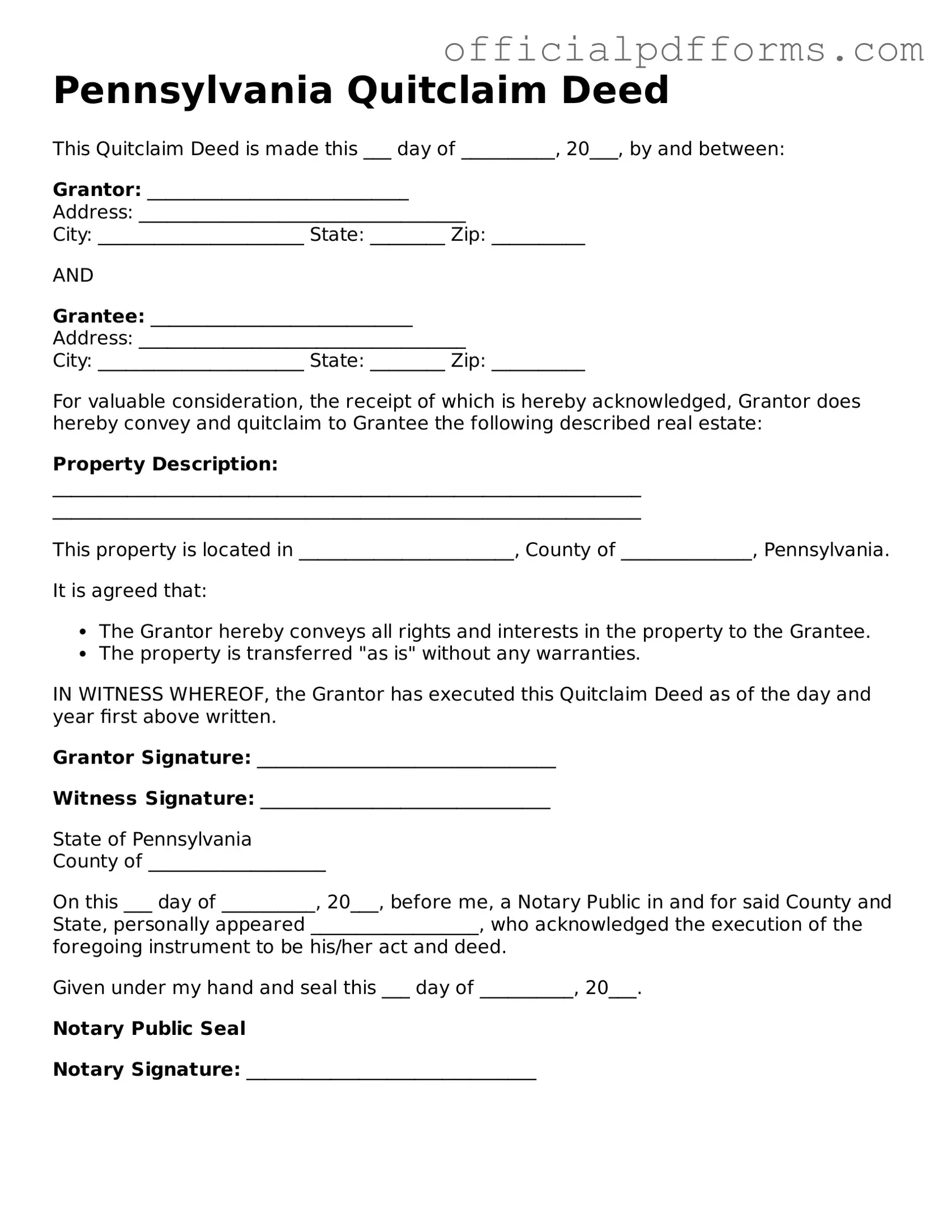What is a Quitclaim Deed in Pennsylvania?
A Quitclaim Deed is a legal document used to transfer ownership of real estate in Pennsylvania. It allows the grantor, or current owner, to convey any interest they may have in the property to the grantee, or new owner. Unlike other types of deeds, a Quitclaim Deed does not guarantee that the grantor holds clear title to the property. It simply transfers whatever interest the grantor has, if any.
When should I use a Quitclaim Deed?
Quitclaim Deeds are often used in specific situations, including:
-
Transferring property between family members.
-
Divorces, where one spouse relinquishes their interest in a property to the other.
-
Clearing up title issues, such as adding or removing a name from the title.
-
Transferring property into or out of a trust.
How do I complete a Quitclaim Deed in Pennsylvania?
To complete a Quitclaim Deed, follow these steps:
-
Obtain a Quitclaim Deed form. These can be found online or at legal supply stores.
-
Fill in the names of the grantor and grantee.
-
Provide a legal description of the property. This information is typically found on the property’s tax records.
-
Sign the document in front of a notary public.
-
File the completed deed with the county recorder of deeds office.
Do I need to notarize a Quitclaim Deed?
Yes, a Quitclaim Deed must be notarized in Pennsylvania. The grantor must sign the deed in the presence of a notary public, who will then affix their seal to the document. This step is crucial for the deed to be legally binding and enforceable.
Is there a fee to file a Quitclaim Deed in Pennsylvania?
Yes, there is typically a fee associated with filing a Quitclaim Deed. The fee varies by county. It is advisable to check with the local county recorder of deeds for the exact amount. Additionally, there may be other costs, such as notary fees or costs for obtaining certified copies.
Will a Quitclaim Deed affect my property taxes?
Generally, a Quitclaim Deed does not directly affect property taxes. However, transferring ownership may trigger a reassessment of the property’s value, which could lead to changes in tax obligations. It is important to check with the local tax authority for specific implications related to property tax after a transfer.
Can I revoke a Quitclaim Deed after it has been filed?
Once a Quitclaim Deed has been executed and filed, it cannot be revoked unilaterally. To reverse the transfer, the original grantor would need to execute a new deed, transferring the property back to themselves or to another party. This new deed must also be notarized and filed with the county recorder of deeds.
What are the risks of using a Quitclaim Deed?
Using a Quitclaim Deed carries certain risks. The primary concern is that the grantor does not guarantee clear title. If there are existing liens or encumbrances on the property, the grantee may inherit those issues. It is advisable for both parties to conduct due diligence, including title searches, before proceeding with a Quitclaim Deed.
